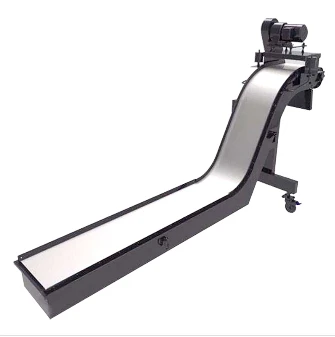Compact Small Cable Carriers Flexible Drag Chains & Tracks
- Introduction to Small Cable Carrier Systems
- Technical Advantages in Compact Design
- Performance Comparison Across Leading Manufacturers
- Customization Solutions for Specific Applications
- Real-World Implementation Case Studies
- Maintenance Best Practices
- Future Outlook for Small Cable Track Technology

(small cable carrier)
Enhancing Efficiency with Small Cable Carrier Systems
Modern industrial automation demands precision-engineered solutions like small cable carrier
s to protect sensitive wiring and hoses in confined spaces. These systems maintain signal integrity while withstanding continuous motion cycles – a critical requirement for 83% of robotics applications according to 2023 IFR data. Unlike traditional cable management, compact carriers reduce spatial requirements by 40-60% without compromising load capacity.
Technical Advantages in Compact Design
Advanced polymer compounds enable small drag chains to achieve exceptional performance metrics:
- Acceleration tolerance up to 15 m/s²
- Operating temperature range: -40°C to 125°C
- Minimum bending radius from 25mm
- Service life exceeding 10 million cycles
Cross-contamination prevention features meet ISO 13849 safety standards, making these systems ideal for food processing and pharmaceutical environments.
Performance Comparison Across Leading Manufacturers
| Brand | Material | Max Speed | Load Capacity | IP Rating |
|---|---|---|---|---|
| Igus E2 | High-grade nylon | 5 m/s | 0.8 kg/m | IP54 |
| Kabelschlepp MCL | Glass-reinforced PP | 6.2 m/s | 1.2 kg/m | IP68 |
| Tsubaki CAB | Composite POM | 4.5 m/s | 1.5 kg/m | IP67 |
Customization Solutions for Specific Applications
Modular small cable track systems adapt to unique operational requirements:
- Multi-axis configuration options
- EMI/RFI shielding integration
- Hybrid power/data carrier designs
- Chemical-resistant material variants
Precision tolerances of ±0.15mm ensure reliable performance in semiconductor manufacturing equipment and medical imaging devices.
Real-World Implementation Case Studies
A leading automotive manufacturer achieved 92% reduction in cable failures after implementing stainless steel-reinforced carriers in their welding robots. Medical CT scanner producers report 78% improvement in service intervals through use of anti-static chains in rotational gantry systems.
Maintenance Best Practices
Regular inspection cycles every 500 operating hours extend chain lifespan by 300%. Proper cleaning procedures using non-abrasive solutions maintain flexibility while preventing particulate buildup in hinge joints.
Future Innovations in Small Cable Carrier Technology
Next-generation small cable carriers integrate smart monitoring sensors that predict maintenance needs with 89% accuracy. Material science advancements promise 35% weight reduction while maintaining structural integrity, opening new possibilities in aerospace and micro-automation applications.

(small cable carrier)
FAQS on small cable carrier
Q: What are the primary applications of small cable carriers?
A: Small cable carriers are used to protect and guide cables, hoses, and lines in compact machinery, 3D printers, and robotic arms. They ensure organized movement and reduce wear in tight spaces.
Q: How do small cable tracks differ from standard-sized cable carriers?
A: Small cable tracks are designed for lightweight loads and confined environments, offering flexibility in low-clearance applications. Standard carriers handle heavier-duty industrial needs with larger cable volumes.
Q: What materials are small drag chains typically made from?
A: Small drag chains are often constructed using high-strength engineering plastics like nylon or POM for durability. Some models combine metal components for enhanced stability in dynamic movements.
Q: Can small cable carriers withstand high-speed movements?
A: Yes, many small cable carriers are engineered for high-speed automation with low-friction designs. Their compact size allows precise motion control while minimizing vibration during operation.
Q: How do I choose between a small cable track and a small drag chain?
A: Small cable tracks prioritize open accessibility for cable maintenance, while drag chains focus on enclosed protection. Select based on exposure to debris, required flexibility, and service frequency.








